18th Zen Nihon Pro Tournament Game 2
Black: Tanigawa Koji, Kisei
White: Okazaki Hiroshi, 5-dan
18th Zen Nihon Pro Tournament, Game 2, April 18th 2000
1.P7g-7f 0/0 0/0
2.P3c-3d 0/0 3/3
3.P2g-2f 1/1 0/3
4.P4c-4d 0/1 0/3
5.P2f-2e 2/3 0/3
6.B2b-3c 0/3 0/3
7.S3i-4h 0/3 0/3
8.S3a-3b 0/3 0/3
9.P5g-5f 0/3 0/3
10.S3b-4c 0/3 0/3
11.K5i-6h 0/3 0/3
12.S7a-7b 0/3 0/3
13.K6h-7h 3/6 0/3
14.P6c-6d 0/6 2/5
15.S7i-6h 0/6 0/5
16.S7b-6c 0/6 0/5
17.G4i-5h 2/8 0/5
18.K5a-6b 0/8 9/14
19.P3g-3f 17/25 0/14
20.K6b-7a 0/25 2/16
21.S4h-3g 6/31 0/16
22.P7c-7d 0/31 11/27
23.S6h-7g 13/44 0/27
24.R8b-2b 0/44 7/34
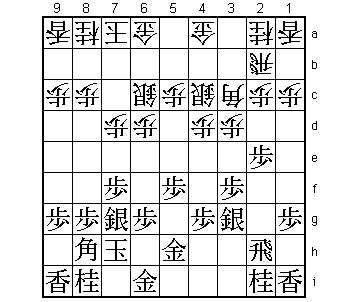
Like in Game 1, Okazaki tries to confuse Tanigawa with an unusual opening.
The Yodofuribisha (pretending to play Ibisha and then switching to Furibisha)
is not often seen in title matches. In Game 1, Okazaki was not very successful,
but this time it is a different story. Tanigawa has not played the opening
very accurately and the balance of the silvers on 3g and 7g is not good.
The opening is a strategic win for white.
25.P6g-6f 1/45 0/34
26.G4a-5b 0/45 2/36
27.B8h-7i 0/45 0/36
28.S6c-7b 0/45 22/58
29.G5h-6g 9/54 0/58
30.N8a-7c?! 0/54 4/62
A little too quick. Okazaki completely overlooked Tanigawa's counterplay
at the head of the knight.
31.S3g-4f 16/70 0/62
32.B3c-4b 0/70 11/73
33.K7h-8h 3/73 0/73
Looks like a normal castling move, preparing for G7h. Okazaki only saw the
hidden meaning when it was already too late.
34.P4d-4e 0/73 3/76
35.S4f-5g 2/75 0/76
36.S4c-5d 0/75 4/80
37.P7f-7e! 12/87 0/80
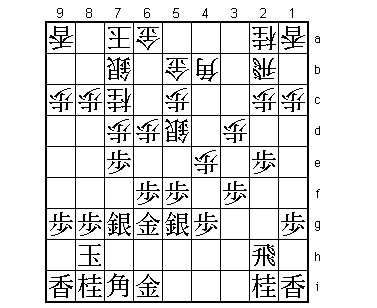
This completely took Okazaki by surprise. He can not play 38.Px7e because of
S8f followed by R7h. Suddenly white is in trouble. Okazaki should have defended
the head of the knight with an earlier G6c.
38.S5d-6c 0/87 18/98
39.P7ex7d 5/92 0/98
40.S6cx7d 0/92 0/98
41.R2h-7h 0/92 0/98
42.P8c-8d 0/92 14/112
43.S7g-7f 1/93 0/112
44.G5b-6c 0/93 4/116
45.P*7e 9/102 0/116
This is a big pawn. Black's advantage is not yet decisive, but this attacking
base is a nail in the knee.
46.S7d-8c 0/102 0/116
47.R7h-2h 0/102 0/116
48.B4b-3c 0/102 15/131
49.N8i-7g 4/106 0/131
50.P8d-8e! 0/106 6/137
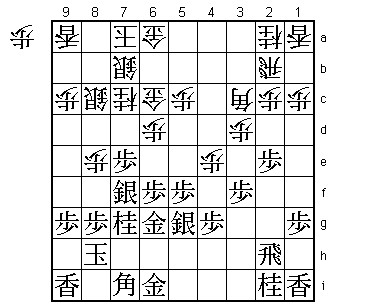
Good fighting move. If white gets the chance to attack the pawn on 7e with
S8d followed by P*7d, black will be in trouble.
51.N7gx8e 16/122 0/137
The only move, but this knight is in danger of being lost to a pawn drop on
8d.
52.N7c-6e 0/122 12/149
53.S5g-6h 0/122 0/149
54.P4e-4f 0/122 0/149
55.K8h-9h 3/125 0/149
56.P4fx4g+ 0/125 6/155
57.P6fx6e 0/125 0/155
58.R2b-4b 0/125 0/155
59.N*5e? 11/136 0/155
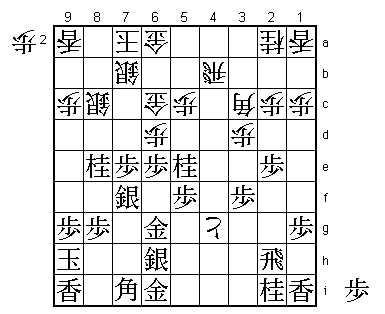
60.B3cx5e? 0/136 11/166
Two mistakes in succession. Okazaki had a chance to make things very
complicated with 60.G5d P*4c R6b P2d Px2d S7g P*8d and white wins back
the knight. Instead white opts for an all-out attack that is mistimed
and gives Tanigawa the chance to display his brilliant endgame skills.
Tanigawa could have forced Okazaki into the same variation as in the game
if he would have played 59.P*4c instead of 59.N*5e. Then after 60.Rx4c
N*5e white has to take the knight with the bishop: Bx5e. This leads to
the same variation as in the game with an extra pawn in hand for white.
Tanigawa thought he could do the same thing without giving up the pawn.
Apparently, Okazaki agreed with him.
61.P5fx5e 0/136 0/166
62.+P4g-3h 0/136 2/168
63.R2h-2g 7/143 0/168
64.R4b-4i+ 0/143 2/170
65.G6i-7h 0/143 0/170
66.N*8d 0/143 0/170
67.P6ex6d 9/152 0/170
68.G6cx6d 0/152 0/170
69.B*7c! 0/152 0/170
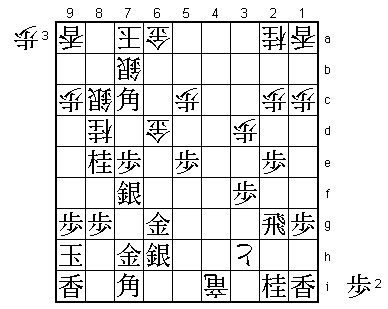
Going straight for the king. If Tanigawa saw all that is to come, this is
a brilliant endgame.
70.+R4i-6i 0/152 1/171
71.B7cx6d+ 7/159 0/171
72.+R6ix7h 0/159 4/175
73.G*8h 0/159 0/175
74.+R7h-6i 0/159 0/175
75.P7e-7d 0/159 0/175
76.N8dx7f 0/159 0/175
77.G6gx7f 0/159 0/175
78.P*7h 0/159 0/175
79.P7d-7c+ 2/161 0/175
80.P7hx7i+ 0/161 0/175
Suddenly it seems that Tanigawa has made a mistake. He has no mate, while
black now is threatening mate (S*8i Gx8i +R7h Gx7h B*8i).
81.+B6dx5c 0/161 0/175
82.K7a-8a 0/161 1/176
83.S6hx7i! 1/162 0/176
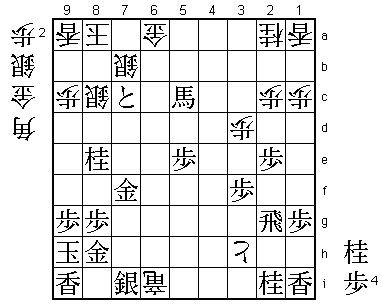
This is the only defence. 84.+Rx7i is no longer threatening mate, so black
can win with 85.+Px8c Sx8c N*7c.
84.B*4e! 0/162 0/176
Good last try. This bishop both attacks (it again threatens mate with S*8i)
and also defends.
85.R2g-7g! 1/163 0/176
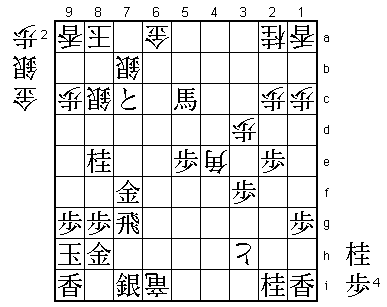
The final blow. White's attack is over.
86.P*7h 0/163 1/177
Virtual resignation as this is not threatening mate. However, a move like
86.G*6h fails to P9f so there is nothing white can do.
87.+P7cx8c 3/166 0/177
88.S7bx8c 0/166 0/177
89.N*7c 0/166 0/177
90.K8a-9b 0/166 0/177
91.N7cx6a+ 0/166 0/177
92.P7hx7i+ 0/166 0/177
93.G*8b 0/166 0/177
Resigns 0/166 0/177
Time: 02:46:00 02:57:00
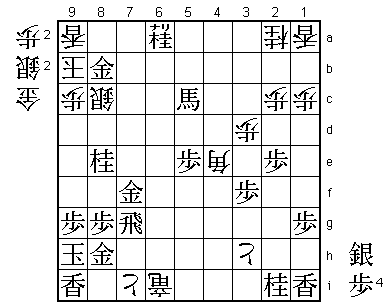
With some fireworks in the endgame, Tanigawa also wins the second game of
the Zen Nihon Pro Tournament and now only needs one game out of three to
win his seventh title. Okazaki seems to play his best shogi with his back
against the wall and he will need that to keep this match going.







